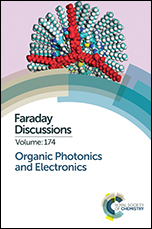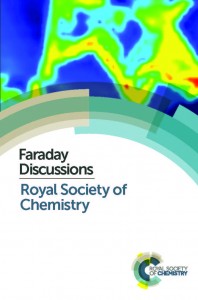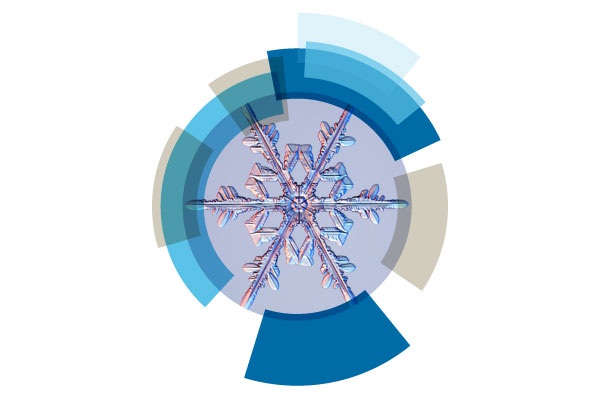Join us for our Faraday Discussions meeting on Solid Oxide Electrolysis: Fuels and Feedstocks from Water and Air in York, UK from 13 – 15 July, 2015.
| The poster abstract deadline has been extended: Submit by 12 May | |
| Register by 25 May to receive a discount |
Read this selection of Accepted Manuscripts which will be presented in York:
Development of a diffuse reflectance infrared Fourier transform spectroscopy (DRIFTS) cell for the in situ analysis of co-electrolysis in a solid oxide cell – Open Access
Denis Cumming, Christopher Tumilson, Rebecca Taylor, Sarayute Chansai, Ann Virginia Call, Johan Jacquemin, Chris Hardacre and Rachael Helen Elder
DOI: 10.1039/C5FD00030K
Oxygen Deficient Layered Double Perovskite as an Active Cathode for CO2 Electrolysis Using Solid Oxide Conductor
Tae Ho Shin, Jae-Ha Myung, Maarten Christiaan Verbraeken, Guntae Kim and John T.S. Irvine
DOI: 10.1039/C5FD00025D
Chromium deposition and poisoning of La0.8Sr0.2MnO3 oxygen electrodes of solid oxide electrolysis cells
Kongfa Chen, Junji Hyodo, Aaron Dodd, Na Ai, Tatsumi Ishihara, Jian Li and San Ping Jiang
DOI: 10.1039/C5FD00010F
Synthesis of mesoporous nanocomposites for their application in solid oxide electrolysers cells: microstructural and electrochemical characterization
Marc Torrell, Alex Morata, Laura Almar and Alberto Tarancon
DOI: 10.1039/C5FD00035A
Evaluation of oxide ceramics as anodes for SOECs
Andreas Egger, Nina Schrödl and Werner Sitte
DOI: 10.1039/C5FD00021A
Interpreting equilibrium-conductivity and conductivity-relaxation measurements to establish thermodynamic and transport properties for multiple charged defect conducting ceramics
Huayang Zhu, Sandrine Ricote, Grover Coors and Robert Kee
DOI: 10.1039/C5FD00012B
Syngas Production by High Temperature Steam/CO2 Coelectrolysis Using Solid Oxide Electrolysis Cells
Xinbing Chen, Chengzhi Guan, Xiao Guoping, Xianlong Du and Jian-Qiang Wang
DOI: 10.1039/C5FD00017C
Electrochemical stability of Sm0.5Sr0.5CoO3-δ-infiltrated YSZ oxygen electrodes for solid oxide fuel cells/electrolysis cells
Mingfang Han and Hui Fan
DOI: 10.1039/C5FD00022J
Synthesis of ammonia directly from wet air using Sm0.6Ba0.4Fe0.8Cu0.2O3-delta as the catalyst
Rong Lan, Khaled A. Alkhazmi, Ibrahim Amar and Shanwen Tao
DOI: 10.1039/C5FD00033E
Relating surface chemistry and oxygen surface exchange in LnBaCo2O5-δ air electrodes
Helena Téllez, John Druce, John A Kilner and Tatsumi Ishihara
DOI: 10.1039/C5FD00027K
Oxygen exchange and transport in dual phase ceramic composite electrodes
John Druce, Helena Téllez, Tatsumi Ishihara and John A Kilner
DOI: 10.1039/C5FD00028A
Calcium Manganite as oxygen electrode materials for reversible solid oxide fuel cell
Chengsheng Ni and John T.S. Irvine
DOI: 10.1039/C5FD00026B
Electrochemistry of La0.3Sr0.7Fe0.7Cr0.3O3-δ as an Oxygen and Fuel Electrode for RSOFCs
Beatriz Molero-Sánchez, Paul Addo, Aligul Buyukaksoy, Scott Paulson and Viola I. Birss
DOI: 10.1039/C5FD00029G
Improved electrochemical stability at the surface of La0.8Sr0.2CoO3 achieved by surface chemical modification
Nikolai Tsvetkov, Qiyang Lu and Bilge Yildiz
DOI: 10.1039/C5FD00023H
Surface Modifications of La0.8Sr0.2CrO3-δ-YSZ Dual-Phase Membranes for Syngas Production
Anthony Sky Yu, Tae-Sik Oh, Ran Zhu, Alexa M. Gallegos, Raymond J Gorte and John Vohs
DOI: 10.1039/C5FD00007F
Proton uptake in the H+-SOFC cathode material Ba0.5Sr0.5Fe0.8Zn0.2O3-δ: Transition from hydration to hydrogenation with increasing oxygen partial pressure
Daniel Poetzsch, Rotraut Merkle and Joachim Maier
DOI: 10.1039/C5FD00013K
Electrode kinetics of the NiO porous electrode for oxygen production in the molten carbonate electrolysis cell (MCEC)
Lan Hu, Göran Lindbergh and Carina Lagergren
DOI: 10.1039/C5FD00011D
Is the surface oxygen exchange rate linked to bulk ion diffusivity in mixed conducting Ruddlesden-Popper phases?
Alex C Tomkiewicz, Mazin A Tamimi, Ashfia Huq and Steven McIntosh
DOI: 10.1039/C5FD00014A
Co-electrolysis of steam and CO2 in full-ceramic symmetrical SOECs: A strategy for avoiding the use of hydrogen as a safe gas
Marc Torrell, Sergio García-Rodríguez, Alex Morata, Germán Penelas and Alberto Tarancon
DOI: 10.1039/C5FD00018A
John Irvine and the rest of the Scientific Committee look forward to welcoming you and your colleagues to York.


















 A new
A new 